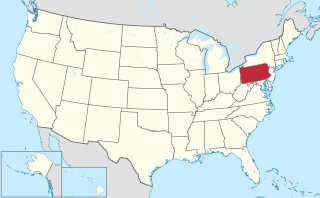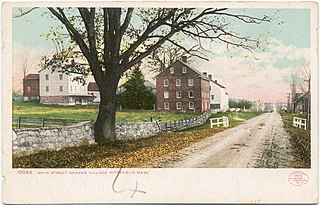Related Research Articles
There are 281 municipalities in the U.S. state of Washington. State law determines the various powers its municipalities have.
Local government in the United States refers to governmental jurisdictions below the level of the state. Most states and territories have at least two tiers of local government: counties and municipalities. Louisiana uses the term parish and Alaska uses the term borough for what the U.S. Census Bureau terms county equivalents in those states. Civil townships or towns are used as subdivisions of a county in 20 states, mostly in the Northeast and Midwest.
Massachusetts shares with the five other New England states a governmental structure known as the New England town. Only the southeastern third of the state has functioning county governments; in western, central, and northeastern Massachusetts, traditional county-level government was eliminated in the late 1990s. Generally speaking, there are four kinds of public school districts in Massachusetts: local schools, regional schools, vocational/technical schools, and charter schools.
A municipal council is the legislative body of a municipality or local government area. Depending on the location and classification of the municipality it may be known as a city council,town council, town board, community council, rural council,village council, or board of aldermen.

Under the laws of the Commonwealth of Pennsylvania, a township is the lowest level of municipal incorporation of government. All of Pennsylvania's communities outside of incorporated cities, boroughs, and one town has been incorporated into a township which serves as the legal entity providing local self-government functions. In general, townships in Pennsylvania encompass larger land areas than other municipalities, and tend to be located in suburban, exurban, or rural parts of the commonwealth. As with other incorporated municipalities in Pennsylvania, townships exist within counties and are subordinate to or dependent upon the county level of government.

The Home Rule City Act was a statute enacted by the Michigan Legislature as Public Act 279 of 1909. It provides the framework by which a new city may become incorporated and provide for its own government by adopting a city charter, and the method by which an existing city may amend or revise its city charter.

In the United States, the meaning of village varies by geographic area and legal jurisdiction. In many areas, "village" is a term, sometimes informal, for a type of administrative division at the local government level. Since the Tenth Amendment to the United States Constitution prohibits the federal government from legislating on local government, the states are free to have political subdivisions called "villages" or not to and to define the word in many ways. Typically, a village is a type of municipality, although it can also be a special district or an unincorporated area. It may or may not be recognized for governmental purposes.
The state of Michigan is largely divided in the same way as many other U.S. states, but is distinct in its usage of charter townships. Michigan ranks 13th among the fifty states in terms of the number of local governmental entities.
The Government of the Commonwealth of Pennsylvania is the governmental structure of the Commonwealth of Pennsylvania as established by the Pennsylvania Constitution. It is composed of three branches: executive, legislative and judicial. The capital of the Commonwealth is Harrisburg.
Local government in New Jersey is composed of counties and municipalities. Local jurisdictions in New Jersey differ from those in some other states because every square foot of the state is part of exactly one municipality; each of the 564 municipalities is in exactly one county; and each of the 21 counties has more than one municipality. New Jersey has no independent cities, or consolidated city-counties.
Local government in Pennsylvania is government below the state level in Pennsylvania. There are six types of local governments listed in the Pennsylvania Constitution: county, township, borough, town, city, and school district. All of Pennsylvania is included in one of the state's 67 counties, which are in total subdivided into 2,560 municipalities. There are currently no independent cities or unincorporated territories within Pennsylvania. There is only one incorporated town in Pennsylvania, Bloomsburg.
The Philadelphia Home Rule Charter reform campaign is a grass-roots campaign in Philadelphia, PA to rewrite the city's 1951 Home Rule Charter, as the result of several local political scandals, the most recent being City Council members' participation in DROP, a Deferred Retirement Option Plan originally intended for civil service.
The law of Ohio consists of several levels, including constitutional, statutory, and regulatory, local and common law. The Ohio Revised Code forms the general statutory law.
The administrative divisions of Ohio are counties, municipalities, townships, special districts, and school districts.
References
- ↑ 53 Pa. C.S. 2901 to 3171, Home Rule Charter and Optional Plans Law
- ↑ Community Environmental Legal Defense Fund. "Home Rule for Pennsylvania Local Governments" (PDF). Archived from the original (PDF) on 2010-10-19. Retrieved 2011-07-11.
- 1 2 Pennsylvania Department of Community and Economic Development (2003). Home Rule in Pennsylvania (PDF) (7th ed.). Archived from the original (PDF) on 2006-06-16. Retrieved 2009-02-09.